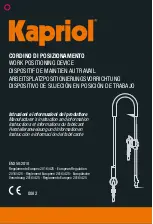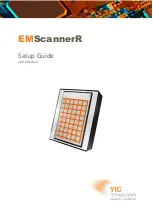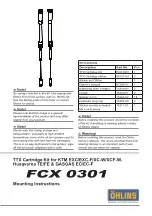
OPERATION
1. Connect the 300 Series Pressure Sensor to the 270 with the appropriate sensor cable. Should there be
any more accessories they are wired in as outlined in Figure A.
2. Plug the power cable from the 270 into a 115 VAC-60Hz power source. For 230-50Hz sources, the power
entry module, Figure C-item D, must be set to the proper voltage.
3. Apply power by turning on the Power switch. (Figure B-item I)
4. Place the Sensor Range switch, Figure B-item J, to the full scale value of the pressure sensor in use.
5. Place the Display Units switch, Figure B-item K, to the mmHg position.
6. Place the Heater switch, Figure B-item G, to the REG position. This applies power to the proportional heater
circuit in the sensor. There will be a small delay between the closing of this switch and the lighting of the
HEATER lamp, Figure B-item F. The lamp should come on brightly, go out and then come on and remain
on at a lower intensity. Should the system contain a 274 multiplex unit, the heater supply is included in that
unit and the REG switch on the 270 must be placed in the OFF position. Allow a minimum of 4 HOURS
to stabilize a "cold" sensor. For sensors that have just been received, it is recommended that they be left
on heat overnight. To achieve the best possible accuracy the heater should always be on.
7. Place the Response switch, Figure B-item H, to the STD position. This provides the best all around response
vs. noise for pressure measurement. When using a series 200 controller, use the FAST position. The SLOW
position is used when low noise on the DC output is more important than fast response.
8. Place the Range SELECT switch, Figure B-item A, to the NULL position. If necessary, adjust the Null Con-
trol, Figure B-item, to produce a zero reading on the Digital Display. (Figure B-item N)
9. Place the Range SELECT to the F.S. position. If necessary, adjust the F.S. control, Figure B-item C, to pro-
duce a full scale reading of +10000* on the panel meter. *(100000 on a 270B-5)
10. Place the Range SELECT to the X0.01 position. Pump the pressure sensor below its resolution (or cross-
port differential units) and check the zero. Correct, if necessary, with the Coarse and Fine zero controls,
Figure B-item D&E. Should these controls lack the range for this adjustment, refer to the Zero and Span
adjustment section in the MKS Instruction Manual for 170 Series Sensors.
NOTE: SHOULD A MULTIPLEX UNIT BE IN USE, THE ABOVE CONTROLS ARE BYPASSED AND
THE ZERO CORRECTION IS DONE AT THE MULTIPLEX UNIT.
11. Place the Range SELECT in the System Check position and compare this reading with the system check
number on the sensor calibration sheet. If the reading is incorrect, refer to the maintenance section.
12. Place the Range SELECT in the X1 position. The system is now ready to display the pressure range of
the sensor. For 1/10 of that range, use the X0.1 position, for 1/100 use the X0.01 position.








































